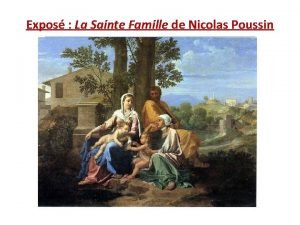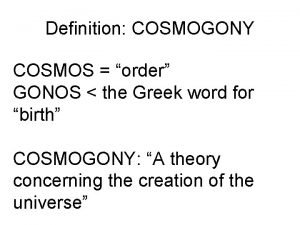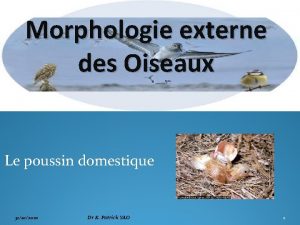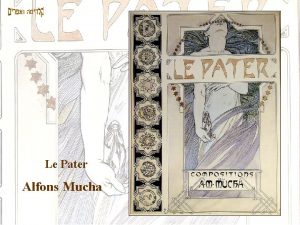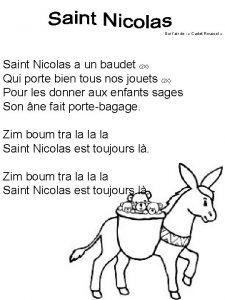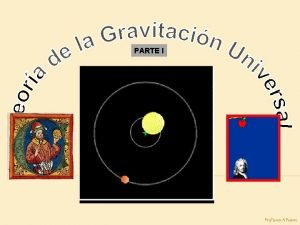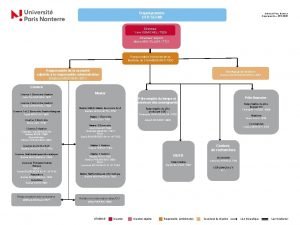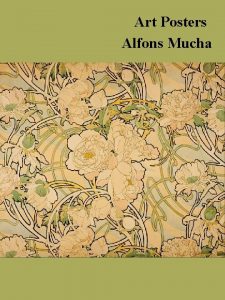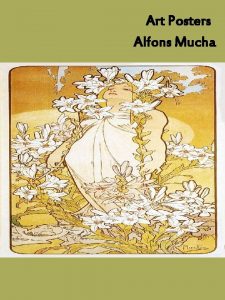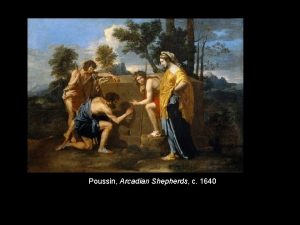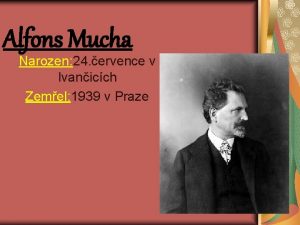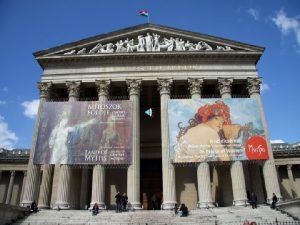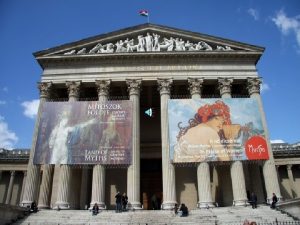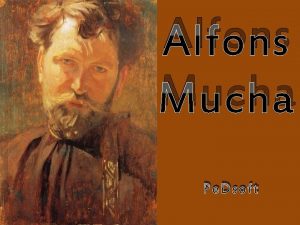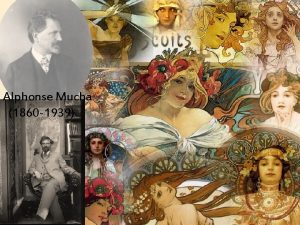Alfons Mucha POUSSIN Nicolas Helios and Phaeton with








!["Enrobed in purple vestments Phoebus [Helios the sun] sat, high on a throne of "Enrobed in purple vestments Phoebus [Helios the sun] sat, high on a throne of](https://slidetodoc.com/presentation_image_h2/84096f7d6350ad5a9eac3feff3a5d695/image-9.jpg)








































- Slides: 49

Alfons Mucha


POUSSIN, Nicolas, Helios and Phaeton with Saturn & the Four Seasons, 1635, Staatliche Museen, Berlin

Bartolomeo Altomonte, The Four Seasons favouring Chronos, 1737 Residenzgalerie Salzburg



Villa Dar Buc Ammera: Roman villa near Lepcis Magna, famous for its mosaics, which are to be seen today in the Archaeological Museum of Tripoli One of the mosaics in the Villa Dar Buc Ammera shows the four seasons, a common theme, also depicted in, for ecample, the Villa Selene. The seasons are surrounded by "Nilotic scenes": they were believed to represent life on the banks of the Nile. They are very common and remained popular until the end of Antiquity

עונות השנה בהגדלה Winter Autumn The four seasons are depicted as winged maidens crowned with wreaths: Winter has a wreath of reeds, Spring and Summer have blossoms and ripened wheat respectively, and Autumn has a wreath of grapes. Villa Dar Buc Ammera Jamahiriya Museum, Tripoli, Libya Spring Summer
![Enrobed in purple vestments Phoebus Helios the sun sat high on a throne of "Enrobed in purple vestments Phoebus [Helios the sun] sat, high on a throne of](https://slidetodoc.com/presentation_image_h2/84096f7d6350ad5a9eac3feff3a5d695/image-9.jpg)
"Enrobed in purple vestments Phoebus [Helios the sun] sat, high on a throne of gleaming emeralds. Attending him on either side stood Dies (Day) and Mensis (Month) and Annus (Year) and Saecula (Century), and Horae (Seasons) disposed at equal intervals between. Young Ver (Spring) was there, with coronet of flowers, and naked Aestas (Summer), garlanded with grain; Autumnus (Autumn) was there with trampled vintage stained, and icy Hiems (Winter), rime upon his locks. " Ovid, Metamorphoses 2. 24 ff Eternal Time: Sun, Moon, and Seasons, Imperial Roman Seven portrait figures adorn this mosaic representing the sun (Helios), moon (Selene) and the four seasons (Horai). The central figure is either Kronos, god of time, or Zeus. (trans. Melville)

Autumn spring Villa Romana Del Casale Piazza Armerina Sicily Winter Summer

The Godess Africa and the Seasons. Museum of El Djem

Winter is enclosed by branches of winter berries, spring by blossoms, autumn by grapes, and summer by ripened wheat. Neptune and the four seasons, 2 nd century A. D mosiac, found in le chebba. The bardo museum, tunis

A detail from a roman pavement mosaic from the second half of the 4 th century A. D. , Carthage, in the British Museum, according to British Museum: section of Months and Seasons pavement mosaic. She appears to be one of the Seasons, perhaps Spring or a wheat-sheaf crowned Summer.

The Romans usually showed their four seasons (Horae) as four women, but in this Roman sarcophagus, featuring Dionysus on a panther, the four main figures (portions of three are visible) who represent the four seasons, are male. Section of Triumph of Dionysos and the Seasons Sarcophagus, ca. 260– 270 Roman Phrygian marble From the Metropolitan Museum of Art

Front panel of a sarcophagus representing the four seasons. Marble, Roman artwork, middle of the 3 rd century CE. Capitoline Museums, Rome

Detail from the Parabiago patera: putti with the symbols of the Four Seasons. Archaeological Museum in Milan

The Titan Prometheus (far right) is seated, busy with the crafting of mankind. Behind him stands a goddess (Tones ? ), and above the butterfly-winged Psykhe (Soul) and Hermes holding acaduceus wand. In the lower left corner stands Aion (Time personified) holding a band inscribed with the signs of the zodiac. Beside him is seated Gaia (Mother Earth) surrounded by a host of little Karpoi (Fruits) carrying their baskets of fruit. Aion may here be the same as Ouranos (Heaven), the consort of Gaia. The four winged ladies above Aion labelled "Erop-" or "Erot-"(? ) are probably the goddesses of the four seasons. Beside them stand figures labelled Georgia (Farmer) and Gripeus (Fisherman). Both wear rustic caps. Along the top are the heads of four blowing Wind-gods and a pair of winged boys named Drosoi (Pure Waters) who pour liquid from pottery vessels. The winds in the top left hand corner are labelled Notos (South Wind) and Euros (East), and those at the top right Zephyros (West) and Boreas (North). PROMETHEUS, GAIA, AION, SEASONS & WINDS, Imperial Roman Mosaic

"The changing Seasons (Horai) brought on the time for our labour to be paid. " Homer, Iliad 21. 450 ff (trans. Lattimore) "When Seasons (Horai) passed and the fourth year came. " Homer, Odyssey 2. 107 ff (trans. Shewring) THE HORAI (or Horae) were the Greek goddesses of the seasons and the natural portions of time. They presided over the revolutions of the heavenly constellations by which the year was measured, while their three sisters spinned out the web of fate. The Horai also guarded the gates of Olympos and rallied the stars and constellations of heaven. The Horai were particularly honoured by farmers who planted and tended their crops in time with the rising and setting of the stars--measures of the passing seasons. The three were usually named Eunomia (Good Order, Good Pasture), Eirene (Peace, Spring), and Dike (Justice) goddesses who individually represented the conditions required for farming prosperity. The association of agriculture with law and order can also be found in the divinities of Zeus, Demeter and the Daimones Khryseoi. Another set of Horai personified the twelve hours of the day. Horae amongst the gods of Olympus, Athenian red-figure kylix C 5 th B. C. , Antikenmuseen, Berlin Detail of the three Horai (Seasons) from a painting depicting the reception of Herakles into Olympos. The three each hold the sign of a season: one has a branch of spring blossoms, another of summer fruit, and the third a winter seed (? ).

Mosaic of the Four Seasons is from the House of Dionysos in Paphos, Cyprus. The fours seasons are in the corners. In order from the top left running clockwise are Summer, Spring, Autumn, &Winter

Venus & four Seasons mosaic , Tunisia

The four figures, crowded behind a stone slab laden with fruit, are clearly identifiable as Spring (a young woman crowned with roses and playing a lute), Autumn (the young man adorned with a Bacchic crown of grapes), Summer (a barebreasted woman who turns and stares directly at the viewer) and Winter (a shivering old man in a fur hat who is wrapped in a blanket). Nevertheless, their arrangement does not suggest the normal progression of the year and their interaction suggests a second level of meaning. The rich array of fruit carefully placed before the figures is composed entirely of autumnal produce: grapes, pears, apples, figs, a pomegranate and a squash. This is clearly the domain of Autumn, who kisses the lute-playing Spring but at the same time embraces Summer, who wears a sprig of his wheat in her hair. Summer holds a small round transparent mirror as a symbol of the Origin of Love. Autumn's kiss and embrace signify that music is born of love, while Winter's exclusion is a sad reminder that in old age one is less inclined towards amorous sentiments. MANFREDI, Bartolomeo Allegory of the Four Seasons, c. 1610 Dayton Art Institute, Dayton


GRIMMER, Abel, Autumn, 1607, Koninklijk Museum voor Schone Kunsten, Antwerp

GRIMMER, Abel, Winter, 1607, Koninklijk Museum voor Schone Kunsten, Antwerp

GRIMMER, Abel, Spring, 1607, Koninklijk Museum voor Schone Kunsten, Antwerp

GRIMMER, Abel, Summer, 1607, Koninklijk Museum voor Schone Kunsten, Antwerp

Spring Summer ARCIMBOLDO, Giuseppe, 1573 Musée du Louvre, Paris Winter Autumn

Nicolas Poussin, Summer (Ruth and Boaz), 1660 -64, Musée du Louvre, Paris

Nicolas Poussin, Autumn, 1660 -64, Musée du Louvre, Paris

Winter the terrible deluge in which all mankind is overwhelmed and destroyed. Nicolas Poussin, Winter, 1660 -64, Musée du Louvre, Paris

Nicolas Poussin, Spring, 1660 -64, Musée du Louvre, Paris

In 1868, the artist was commissioned by his patron, Félix Hartmann, for painting a series representing the four seasons. The Spring in the Musée d'Orsay, was the first of the series, the Summer (Buckwheat Harvest) is in Boston, the Autumn (Haystacks) in New York, and the Winter in Philadelphia. MILLET, Jean-François, Spring, 1868 -73, Musée d'Orsay, Paris

MILLET, Jean-François, Haystacks: Autumn, c. 1874, Metropolitan Museum of Art, New York

MILLET, Jean-François, Buckwheat Harvest: Summer, 1868– 74 , Museum of Fine Arts, Boston

Spring Summer Autumn WIT, Jacob de Allegory of the Four Seasons 1751 -52 , Staatliche Museen, Kassel Winter


Autumn Summer Winter CARRIERA, Rosalba, c. 1725 The Hermitage, St. Petersburg Spring

The 4 seasons or after Rosalba Carriere

Gobert. Pierre Four surviving daughters of Henri Jules de Bourbon, prince de Condé as the four seasons; L-R; Marie Thérèse de Bourbon, princesse de Conti wearing Fleur de Lis as Spring; Anne Marie Victoire de Bourbon in green as Summer; Anne Louise Bénédicte de Bourbon in blue as Autumn; & Marie Anne de Bourbon sat down as Winter, c. 1690


Autumn Summer Winter Spring TINTORETTO, The four seasons, c. 1564, Scuola Grande di San Rocco, Venice The central oval canvas on the ceiling of the Sala dell'Albergo is surrounded by 16 allegories of various size. In the four corners are located the round allegories of the four seasons. The seasons are represented by cherubs vivaciously set out in a flowing agility of poses in the middle of varying vegetation.


Jean Goujon and his workshop decorated the court façade of the Hôtel Carnavalet with four remarkable bas-relief between the five windows of the main floor. They represent the Seasons : from the left Spring )a young man), Summer (Ceres, goddess of the harvest), Autumn (Bacchus, god of wine and grape gathering) and Winter (an old woman. ( Spring and Summer Autumn and Winter GOUJON, Jean, The Seasons, 1550 -56, Hôtel Carnavalet, Paris

סתיו חורף אביב Edme Bouchardon , Fountain of the Four Season , 1745 , Paris קיץ

Paul Cezanne, The Four Seasons, 1860 -1861, Musee du Petit Palais France Spring Summer Autumn Winter

Erato Tsouvala, "Four Seasons ", 2005

John Biggers, Four Seasons, 1984

: מקורות http//: www. artcyclopedia. com/Four. Seasons http: //commons. wikimedia/Seasons_in_art אסף פלר : עריכה The Four Seasons, 1850 By Henry Picou (French, 1824 - 1895), Jean-Léon Gérôme (French, 1824 - 1904), Gustave Rodolphe Boulanger (French, 1824 - 1888) & Jean-Louis Hamon (French, 1821 - 1874)

 Mucha affiche sarah bernhardt
Mucha affiche sarah bernhardt Slovansk
Slovansk Alfons mucha johanka z arku
Alfons mucha johanka z arku Alphonse mucha ads
Alphonse mucha ads Nicolas poussin la sainte famille
Nicolas poussin la sainte famille Puget
Puget What does cosmos mean in greek
What does cosmos mean in greek Daedalus example/proof from the text
Daedalus example/proof from the text Oiseau anatomie externe
Oiseau anatomie externe Moi aussi
Moi aussi Nicolas simar
Nicolas simar Défense poussin
Défense poussin Alfons de kameel
Alfons de kameel Alfons auer
Alfons auer Alfons beldman
Alfons beldman Dr alfons schmid
Dr alfons schmid Alfons ten brummelhuis
Alfons ten brummelhuis Andreas prodromou helios 522
Andreas prodromou helios 522 Circe aeaea
Circe aeaea Joanna helios uwr
Joanna helios uwr Helios gene gun
Helios gene gun Helios powers
Helios powers Mars god powers
Mars god powers Dendron root word
Dendron root word Panos stathopoulos
Panos stathopoulos Steag helios 3 x foup
Steag helios 3 x foup Meat inventory management
Meat inventory management Dulces y conservas helios
Dulces y conservas helios Kino helios piotrków
Kino helios piotrków Helios in the odyssey
Helios in the odyssey Kino helios kk
Kino helios kk Helios smart
Helios smart Mucho mucha muchos muchas
Mucho mucha muchos muchas Zachwycony jej powabem błagał żabę
Zachwycony jej powabem błagał żabę Alphonse mucha le pater
Alphonse mucha le pater Spiaczka afrykanska
Spiaczka afrykanska Veo que he creado muchos poetas pero no mucha poesía
Veo que he creado muchos poetas pero no mucha poesía Przeobrażenia owadów
Przeobrażenia owadów Mucha jelenia
Mucha jelenia La mies es mucha
La mies es mucha La mies es mucha
La mies es mucha Mucha sposobujuca spavu nemoc
Mucha sposobujuca spavu nemoc Mucha suerte para el examen
Mucha suerte para el examen Nico de bree
Nico de bree Clic clac chanson saint nicolas
Clic clac chanson saint nicolas Nicolas rouquie eps
Nicolas rouquie eps Nikolas kokkalis
Nikolas kokkalis Boyaval catherine
Boyaval catherine Doris pastore
Doris pastore Ufr segmi nanterre
Ufr segmi nanterre




